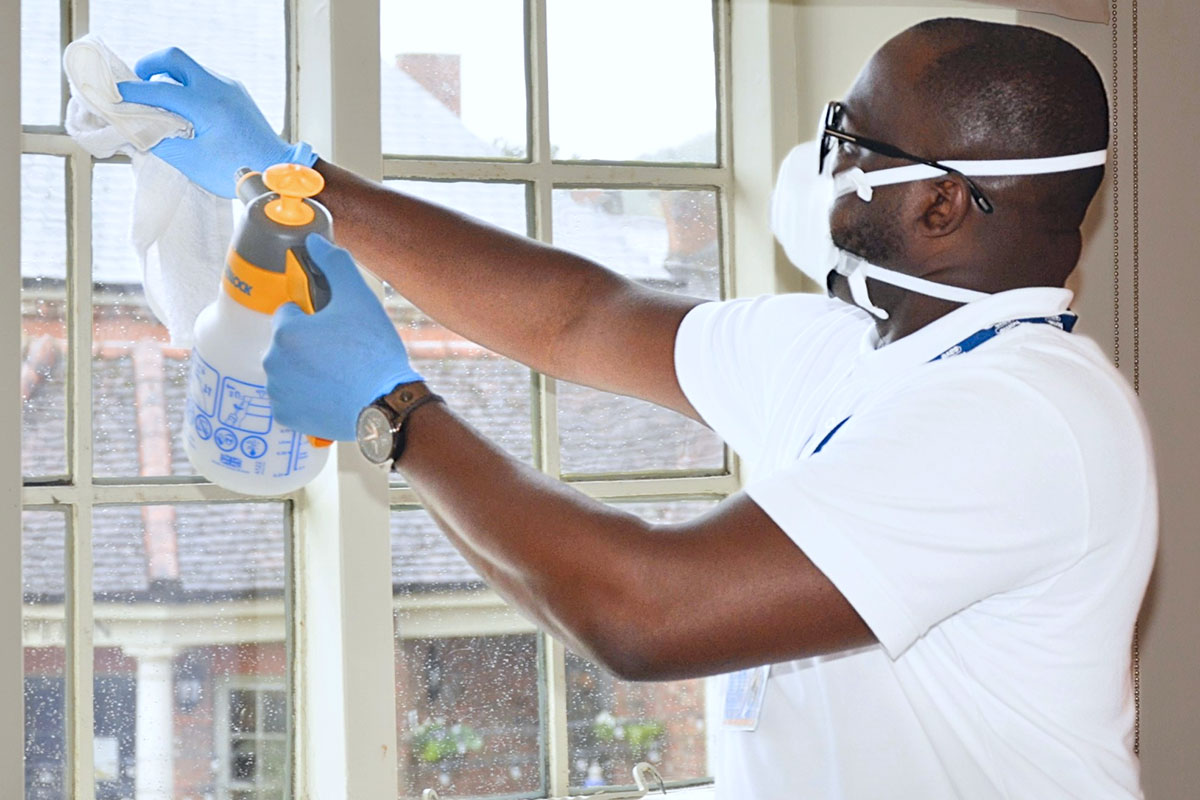On the horizon
Are landlords making the most out of their procurement processes, and what challenges does the future hold? Inside Housing and Procurement Hub’s survey sought answers
In association with:

The known unknowns of Brexit, tighter budgets, the 1% rent reduction and shortages of contractor capacity have concentrated minds among procurement managers in housing.
Procurement is where creative thinking about better value can stretch an organisation’s shrinking resources further. Inside Housing carried out a survey with Procurement Hub asking purchase managers what they think are the main risks they foresee to their organisation’s ability to deliver. It received 176 respondents in total.
Asked for the greatest risk to their organisations, 47% cited the impact of “continued reduced rents and budgets”, while 33% pointed to “welfare reform” - both well ahead of any other factor.
As one comment starkly put it: “If the tenants don’t pay their rent due to the Welfare Reform Act procedures, there will be very little money coming into the pot and this will cause [us] the biggest procurement challenge.”
Another noted their main concern as “balancing increases in contract prices through inflation against reduced income due to rent reductions”.
When it came to Brexit’s impact, only half considered themselves “very well” or “well” prepared, possibly because it is as yet unclear what to prepare for.
A comment from one respondent said the greatest risk they faced was “continuing to achieve value for money in the face of Brexit”, while another specified their problem as “price increases due to Brexit”.
How far procurement can help deliver better value depends largely on how skilled practitioners are and their clout within their organisation. Among respondents, 45% had a team of qualified procurement professionals, and 20% a dedicated though not yet Chartered Institute of Procurement & Supply-qualified staff.
Only 45% considered their procurement team had a strategic function, with 39% saying it was just operational. Three per cent had no formal teams or procedures.
The finding that really surprised Alan Heron, head of procurement at Procurement Hub, was the 7% who considered procurement “very unimportant” to their organisation.
Disconnected thinking
Admittedly 37% considered it “very important” - with the rest falling in between - but Mr Heron says: “I’m quite puzzled by the 7% who think it’s not very important as they have expressed concerns about budgets and welfare reform, and procurement can help them to get better value for money, so there seems to be a disconnect there.”
What’s more, there are recent innovations in procurement that are helping organisations to deliver efficiencies and improve value for money.
A dynamic purchasing system (DPS) provides a shortlist of suppliers from which buyers can conduct a competition for tenders. Unlike a conventional framework, suppliers can apply to join the DPS at any point.
DPSs, although not new, were “tied up in red tape” until 2015 and are now “much easier to use”, says Mr Heron.
This perhaps accounts for the spread of responses on awareness of these systems. Some 32% had never heard of them and the rest was divided almost evenly between those who considered themselves “fully aware”, those with “some understanding” and those who had simply heard of the concept.
The advantage of a DPS is that it gives purchasers more control compared with conventional frameworks, explains Mr Heron.
“With a framework, purchasers have little chance to influence the questions asked of suppliers; they just have the question and answer process that was there at the start. With a dynamic purchasing system, they can put any question they want and apply whatever weighting they choose.”
Seeking contractors
At the coalface, procuring satisfactory contractors can be difficult, a factor cited by many respondents including three who described themselves as “fully aware” of dynamic purchasing systems.
Rachel Willacy, group head of procurement and business development at Torus, says: “We do find a problem with procuring contractors as we have an increased appetite to develop and finding partners can be difficult due to labour shortages or financial stability.”
In the south’s pressured market, Guy Stapleford, head of procurement at Bracknell Forest Homes, says his main issue is “an 8% materials price increase caused by the state of the pound, which is difficult to mitigate”, with suppliers reluctant to negotiate “pain share” deals.
Bracknell Forest has some 7,500 general needs homes and spends about £750,000 a year on repairs and maintenance materials.
Despite this fair-sized budget, Mr Stapleford says: “Suppliers are too few and we suffer from being on the edge of London, where there are more and larger contracts available.”
Jenny Swainson, procurement manager at Northampton Partnership Homes, built a procurement function for the arm’s-length management organisation when it was created two years ago.
Her main issue is the 1% rent reduction, the pressures of which she says mean “we are seeing price coming back as the main factor in decisions. We had moved to combinations of price and quality and best life cycle value but now we are having to look more at price”.
The survey asked about the challenges and barriers most commonly met in the procurement process.
The challenge of procurement is balancing a process that is fair and accountable while also being manageable to operate. The difficulty of striking that balance is shown in the fact that some 33% rated the processes they operate as “too complicated/unwieldy”, and 46% said the processes were too time-consuming, while 12% considered them too costly. A quarter cited a lack of in-house expertise in making these procedures work.
Scarcity of supplier
When it came to suppliers, their scarcity was most often a problem, mentioned by 20% of respondents, while only 6% faced the difficulty of having to choose among too many.
Does the procurement profession have sufficient skills and status to deliver for landlords?
The picture is mixed. Mr Stapleford thinks it is “too tactical. People have been rebranded from procurement officers, to category managers, to commercial specialists without their skills changing”.
Ms Swainson says: “It’s generally thought that procurement in housing is not very well developed but we have designed a strategic service capacity around taking a commercial approach, seeking value for money and adding social value.”
At Torus, Ms Willacy says: “Procurement was part of finance but with the creation of my role it has been separated out and reports into the senior executive team directly so it has greater support and visibility to drive strategic procurement across the business.”
Procurement managers face multiple challenges that boil down to the availability of money and of appropriate suppliers on whom to spend it. The current landscape is complex, but a move towards more fully developed procurement procedures will no doubt pay dividends for social landlords in the future.










